The Ultimate Bookmark Manager: Why Raindrop Stands Out


Bookmark management can often be frustrating, with many unsatisfactory solutions available. However, after discovering Raindrop, I can confidently say it has become my top choice for a bookmark manager—other options just can’t compare.
Superior to Any Browser Bookmark Management Tool
Like many users, I initially relied on my web browser to save bookmarks, starting with Internet Explorer and later transitioning to Firefox and Chrome. This led to having separate bookmark sets across different browsers. After moving to Brave, I faced the same drawback of browser-dependent bookmark managers: syncing across devices requires using the same browser everywhere.
For instance, when logged into Google on Chrome for bookmark synchronization, the search results tend to get overly customized, which often detracts from their usefulness. Plus, accessing your bookmarks on another person’s device involves complex logins, requiring you to sign out their account before signing in yours.
With Raindrop, I can forget about these inconveniences. It seamlessly operates across platforms without tying me to any specific browser.
Comparing Raindrop with Pocket
In the past, I shifted away from using my browser for bookmarks and instead tried Pocket. I was drawn by its association with Mozilla, the brains behind Firefox, and it seemed to be the best available bookmark manager at that time. It offers a range of features similar to Raindrop, including:
- Unlimited saving of links for free
- Cross-device compatibility with browser extensions
- Multiple integrations for saving links from various applications
- Tags for easy retrieval of saved items
- Read articles within the app/site
- Highlight and favorite saved links
- Ability to create offline libraries
- Filtering options
- Robust search functionality, including full-text searches
- Two-factor authentication for enhanced security
Why Raindrop Outshines Pocket
You might wonder why I would switch from Pocket, given its extensive feature set. Simply put, Raindrop offers numerous additional functionalities that elevate it above Pocket. Some standout features of Raindrop include:
- Unlimited highlights available in the free version (Pocket requires a premium subscription for this feature)
- Ability to upload files, not just links, with free users able to upload files totaling up to 100 MB each month
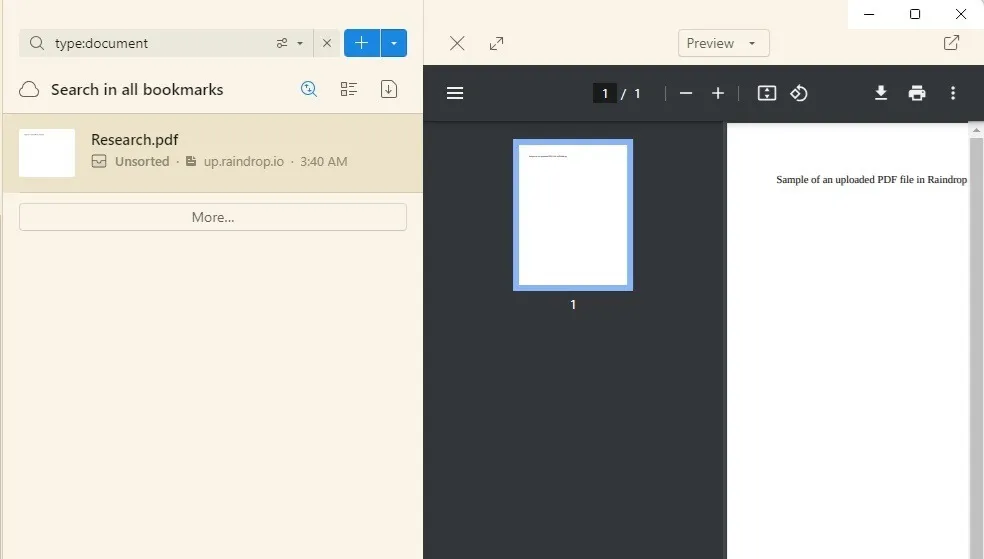
- Multiple view options in the web and desktop versions (mobile apps only allow theme changes)
- No clutter from suggested collections and articles—just my curated content
- Ability to create collections instead of merely tags (while Pocket added collections for the web, the Android app currently lacks options for creating new collections)
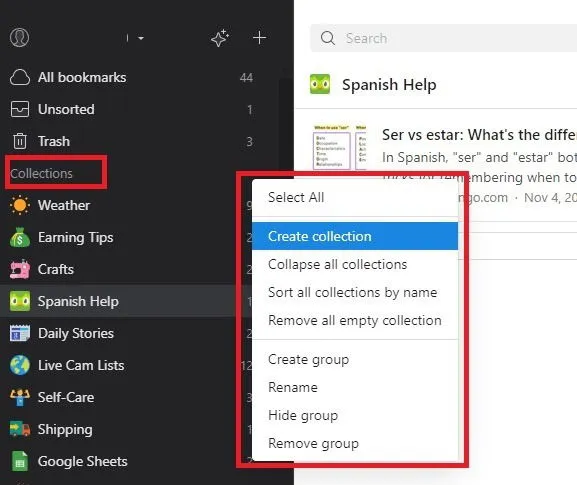
- Option to select icons for collections
Honestly, the last feature addressed one of my main frustrations with Pocket: when I access a bookmark manager, I want my bookmarks to be the primary focus, not a plethora of recommendations. I prefer an RSS reader to gather content from my most loved sources.
Raindrop in Comparison to Notion and Evernote
I had several recommendations to explore Notion or Evernote for bookmark management since both are free and cross-device compatible, enabling extensive customization. However, this is where their advantages end.
While I appreciate both Notion and Evernote—especially the variety of free Notion templates—I was looking specifically for a dedicated bookmark manager and didn’t want to start from scratch in setting one up.
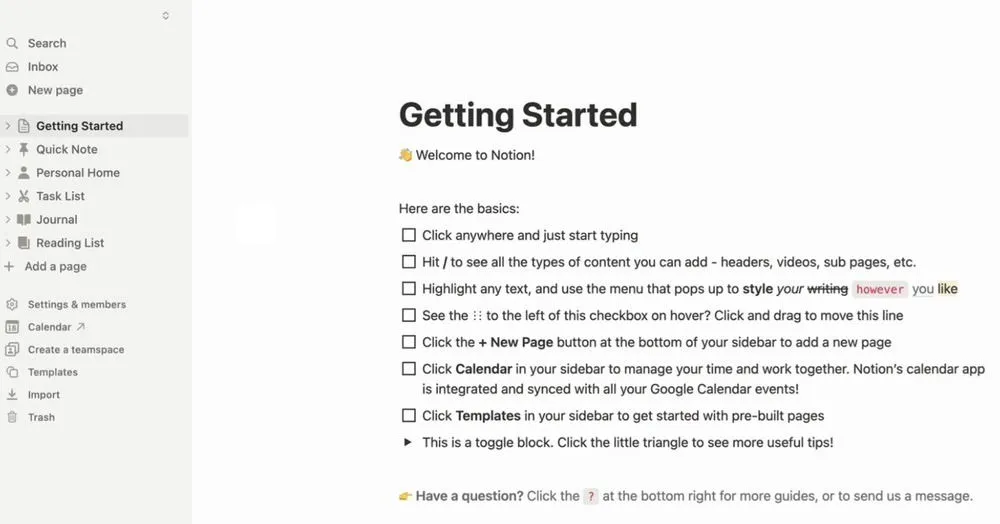
I value that Raindrop is ready to save bookmarks from the moment I create my account without the need for extensive setup or template customization.
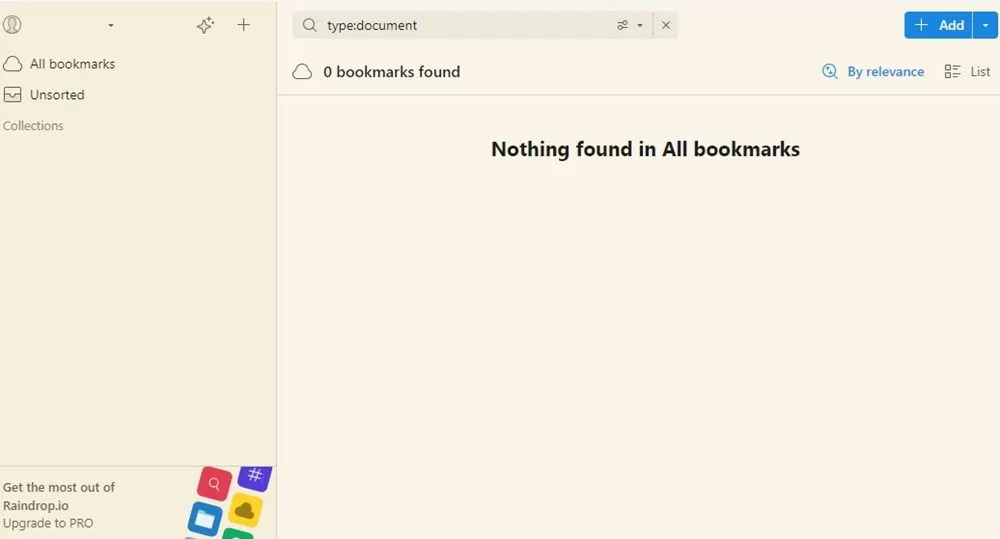
If you prefer a more DIY approach, though, almost any note-taking application can suffice, including alternatives to Evernote.
Pros and Cons of Raindrop Bookmark Manager

Raindrop is, by far, the most exceptional bookmark manager I’ve encountered, due to several factors, such as:
- Fast and intuitive setup process
- Unlimited bookmarks, collections, and highlights (many competitors charge for these features)
- Anelegantly clean and minimalistic interface
- Efficient basic search functionality
- Ability to open links either within the app or in the preferred web browser
- Excellent ease of use due to few settings to adjust

- Quick loading times for pages (I encountered sporadic speed issues with Pocket)
- Option to attach files along with my research
However, no application is without its flaws. If I had the chance to suggest some improvements, I would:
- Add customizable features to the in-app reading experience, such as font choices and background colors. While Pocket offers some of this, these enhancements are restricted to premium users.
- Preserve user settings post-update. Updating the Android app often resets my preferred link-opening method; I favor opening links in the app rather than the default browser.
- Include automatic backup options for free users. I believe every app should offer free backups. Thankfully, I can manually click the Export button to create a complete backup anytime, which I try to do monthly, especially after saving numerous links.
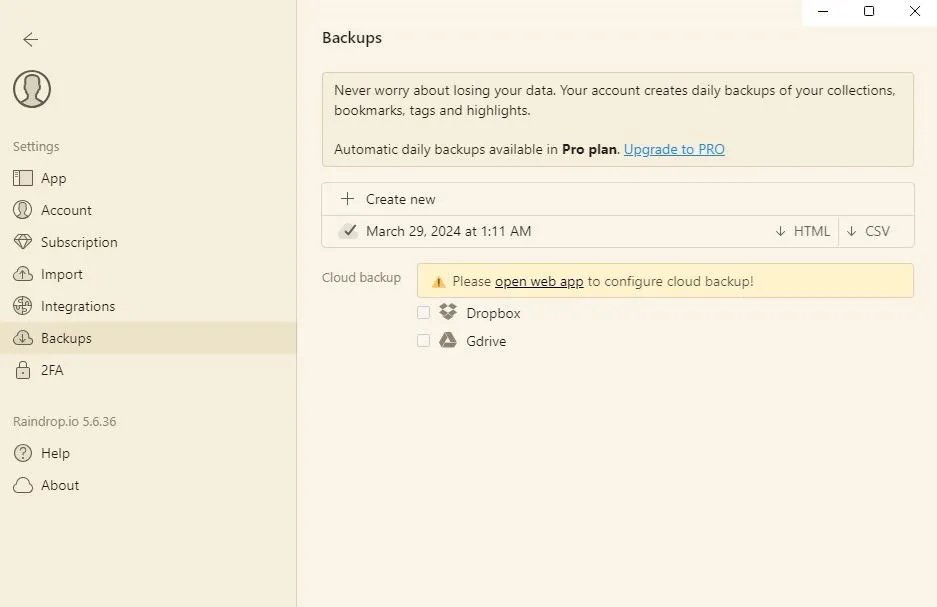
- Several integrations require IFTTT for effective functionality.
- Some appealing features are restricted to premium users. This is understandable, given the need for the app to generate revenue, but full-text search is a premium-exclusive feature, which can limit basic search efficiency.
- When adding a link, if a collection isn’t predefined, I have to return to edit it later—which, while minor, can be an annoyance.
After trying the premium version for a few months, I realized I could get by without it. The only significant feature I miss is the permanent library option that allows me to retain copies of web pages even if they’re removed from the internet. Nonetheless, Raindrop’s yearly cost is only $28, a much more pleasing price compared to Pocket’s $45.
Discover Your Perfect Bookmark Manager
While it’s clear that I’ve found my favorite bookmark management tool, I fully recognize that it may not suit everyone’s needs. If you explore Raindrop and find it’s not the right fit, consider these alternatives:
- Papaly (functions in a board format)
- Dropmark (has a Pinterest-like feel)
- Diigo (limits you to 500 free links)
Additionally, you might want to explore AI-driven tools or even create a personal bookmark management solution.
Image credit: Canva. All screenshots by Crystal Crowder.
Leave a Reply